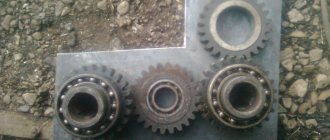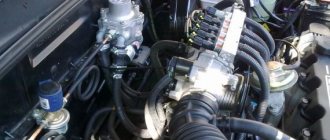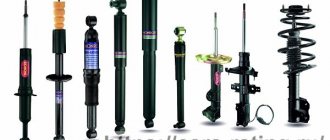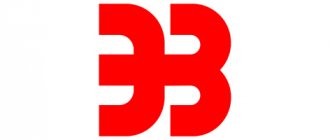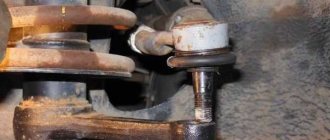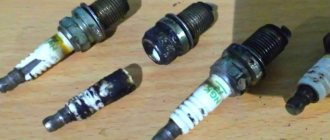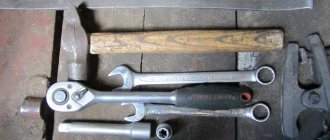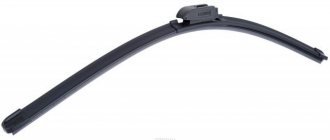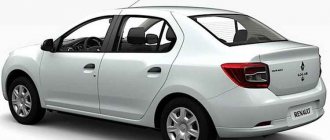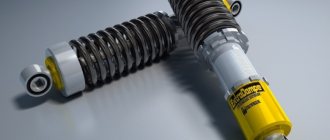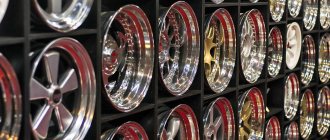Forged or cast wheels: we analyze the production stages
The difference between forged and cast types begins at the manufacturing stage.
To make forged ones, you initially need to melt the base - metal. Its composition is dominated by magnesium and aluminum.
- Molten metal is poured into special molds that resemble a cylinder.
- Next, after the mass has cooled, cutting begins. This is how the workpiece is made; the process itself is reminiscent of cutting wood.
- After this, the workpiece is sent to the oven. It is heated and compressed under pressure. This way you get something like pancakes. The process itself, although vaguely, resembles forging iron. This is where the name came from.
- After the press, there are no cavities left in the metal; it becomes fine-grained. Due to this, upon impact, it is not completely destroyed, but only deformed.
- The workpiece is sent back to the oven. Next is the press, but the dies are changed first. At this stage, the workpiece takes on its familiar shape, but there are still no holes on it.
- The workpiece goes through the oven again, and again through the press. The outlines of the sides become visible.
- After the press, the workpiece is placed in a hot oven. This is followed by temperature shock - cooling in water. This is done so that the metal becomes dense and durable. This procedure is done three times.
- The workpiece is sent to the workshop where mechanical processing takes place. After finishing the work, the product is ready and can be displayed in the store.
The production of cast wheels also begins with melting the metal. Copper is added to a mass similar to the previous one in composition. The base is melted and sent into molds.
Next, the heated workpieces are also subjected to temperature shock. It is because of this process that the metal becomes unstable. Small cavities form inside it, which are invisible to the eye and have a minimal size. They destroy the product from the inside, and upon impact, they aggravate the situation.
The workpiece is again heated to 200 degrees, and kept in this way for up to 8 hours. Cooling occurs naturally; temperature shock is no longer applied.
After this, the discs are taken out and ground, sometimes painted. They become aesthetically pleasing and ready for sale.
Casting characteristics may vary depending on the metal and molds used in the manufacturing process. Even painting affects the quality.
There is a myth that there are no designs on forged wheels. Actually this is not true. The limited design choice is justified by the fact that only a few companies manufacture forged wheels.
Steel stamped
Drivers call them indestructible and are willing to overpay for quality. They have no equal on domestic roads. And all thanks to spot welding and separate stamping of the rim and disc. But these are not their only advantages.
Damaged stamped disc
Advantages and disadvantages
Advantages of products made from steel stamping:
- Resistance to deformation upon impact. Stamping can withstand more loads than foundry. In this case, the probability of a crack tends to zero.
- The price of such discs is much lower than solid cast and forged ones combined.
- Such parts are easier to repair and restore. The only exceptions are completely crumpled elements. In other cases, straightening and welding treatment come to the rescue.
Disadvantages include massiveness and premature wear of the suspension due to its massiveness. But it is precisely this factor that saves motorists on our roads, because shock absorbers do everything to soften the collision of a car with an obstacle.
But the main problem with the rim is corrosion, which is slowly eating away at the wheel. Increased rust formation occurs in winter and spring, when traces of anti-icing reagents remain on the roads. Therefore, before preservation, winter wheels must be repaired if they are planned for further use or sale.
The main advantages of forged and cast wheels
Forged wheels are characterized by high quality, this is due to multi-stage production stages. In addition, it can be noted:
- light weight, 20% lighter than cast ones;
- not subject to rotting and corrosion;
- the most durable among all types of discs;
- reduce the load on the suspension;
- aesthetically pleasing, look harmonious on any car.
The main disadvantage is the price. Forged ones are 70-90% more expensive than other representatives in the segment. You can also note the rigidity. If a car falls into a hole, the tire may be damaged, but the disc will be unharmed.
How to distinguish forged wheels from cast ones ? Externally they are almost identical. But foreign-made forged ones have the inscription Forged or Gefalscht. On cast ones, the inscriptions are convex, on forged ones, on the contrary, they are stamped. You can also distinguish by weight: cast ones are heavier.
Casting also has advantages, including:
- There are many options on the market, everyone can choose to suit their taste;
- lighter than stamped discs, the difference can be up to 30%;
- if the composition contains only aluminum, this will help avoid rust;
- thanks to the same aluminum, a material that conducts heat, it protects the brake system from overheating;
- easier to balance.
Casting also has quite a few disadvantages:
- Fragility. Thanks to micro cavities during the production process, when impacted, there are no dents left on it, only a crack. If damaged again, it may completely collapse.
- Cannot be repaired. Discs can be restored in several ways: rolling, straightening, painting. In exceptional cases, welding is possible. But after repair, the disk changes its properties, because heating occurs during the process, and the structure of the metal changes.
- Diversity. Due to the large selection, drivers prefer original models. Once one disk becomes unusable, it is difficult to find a suitable model. Sellers may also refuse to sell only 1 disc.
- It is better to avoid using it during the cold season. In winter, curbs are under a layer of snow, and drivers do not notice them when parking. The discs are easy to scratch at this point.
The casting cannot be installed on minibuses and small trucks. This is due to the load that the casting cannot withstand.
The main differences between forging and casting - look from all sides
Despite the very similar appearance of these options for light alloy products, they differ from each other in many respects. This is why many premium cars in foreign markets come with forged wheels, and owners of expensive sports cars prefer to replace traditional casting with expensive and spectacular forging.
The features presented below will not only give you more information about the types of wheels, but also answer the question of how to distinguish alloy wheels from forged ones.
Weight of different types of rims
The name “light alloy” speaks for itself. A light alloy turns out to be lighter than simple stamped steel products. But if we compare only the two types of wheels that interest us today, the weight of forged products is somewhat less. This is a consequence of production methods that involve stamping the original blanks rather than pouring hot alloy into a mold. However, the difference in weight is not so big as to overpay for such a prerogative.
Shape and configuration
In this regard, there are no special differences, since modern metalworking methods allow manufacturers to shape the appearance of discs at their discretion. It will be extremely difficult to distinguish one option from another without a professional examination. But the price tag can help. If you buy German or Japanese forged wheels at an affordable price, then they are selling you a fake, since their price is incredibly high.
Method of applying inscriptions to wheels
Often, manufacturers apply raised inscriptions on cast versions of wheels, but forging has an engraving and a stamped type of information. This is not always relevant, since often casting manufacturers fake their products for stamping and produce molds with inscriptions pressed inside. But you won’t find such troubles on expensive branded wheels.
Some distinctive characteristics of wheels
Different types of discs differ in indirect characteristics. For example, in cast versions you can often find an uneven edge, especially upon very careful examination. Forging from a good manufacturer is free of such unpleasant moments. But domestic forged wheels often have flaws that may make you think about a fake.
Cost – which discs are more expensive?
Of course, forged products turn out to be much more expensive, since they require more complex equipment and a lengthy processing process. Labor costs and complexity of metal processing in the case of forged products are much higher. Products turn out to be more expensive also because they differ favorably in their performance characteristics. Forged wheel models are used to make luxury products, and the price tag is often artificially inflated.
What is the difference between forged wheels and cast wheels?
The main difference between them is the production technology. But besides this, there are also differences in distribution and application.
Forged ones are not so popular on the market among motorists. In Europe, they are in demand among owners of luxury sports cars, for whom the strength of the material is important.
Due to their low weight, forged wheels are used by car tuning enthusiasts. They also contribute to better aerodynamic properties of the car.
Alloy wheels owe their popularity to their beautiful appearance. They are budget-friendly and accessible to all car enthusiasts. Also lighter and stronger than stamped discs.
The main differences between the two types are impact resistance and lightness.
The high cost of forged wheels is explained by the complex production, which includes many stages.
Alloy wheels:
Alloy wheels are mostly standard on many modern cars. The point here is this. Many automakers in recent years have begun to equip their vehicles with such wheels for one purpose, namely, to attract more and more new buyers to their cars, and all this happens due to the stylistic beauty and efficiency of alloy wheels. In addition, such light alloy wheels have some operational advantages over steel wheels. Unlike steel wheels, alloy wheels can be cast at the factory in a variety of custom styles, giving each car model its own unique style. In recent years, car and wheel manufacturers have begun to use a certain mixture of two alloys (nickel + aluminum) to make such light-alloy wheels. Discs made of this cast material weigh much less than, for example, discs made of aluminum or the same steel.
Thanks to the reduced weight, the vehicle's acceleration speed increases and at the same time fuel consumption decreases. In addition, when using alloy wheels, the driver gets more pleasure from driving the car.
Cast alloy wheels can also be polished, painted, or matte or chrome plated. True, there is a small and insignificant “but”, alloy wheels can be easily subject to external mechanical damage (scratches, oxidation, corrosion, etc., etc.)
What to look for when choosing disks?
When going shopping for your “iron horse”, you need to first familiarize yourself with the technical passport of the car. It contains information about which radius and depth is preferable for a particular machine model.
But this is not enough. There are several other factors to consider:
- Manufacturer. The company must be famous. There is no need to rely on a manufacturer about whom nothing is known.
- Place of purchase. In pursuit of savings, many car owners prefer to buy on the market. This has some consequences. A seller on the market is unlikely to be able to provide documents that confirm the originality of the product. The same applies to quality certificates. There may also be problems with returns if the product is not suitable. Thirdly, cost. The difference between the price on the market and in the store is not so great as to expose such risks.
- Compatibility. If you purchase chrome wheels, but there are no such parts on the car itself, then it is better to refuse the purchase.
Companies that produce forged wheels often focus on the material when advertising when talking about strength. In fact, the same materials are used in the production of casting and forging.
Which wheels are better: cast or forged ? There is no clear answer to this question. The differences between them begin already at the production stage. The cost-effectiveness of casting creates diversity in the market.
The complex stages of forged production make the product expensive and durable.
Every motorist is free to choose what is preferable to him: buy high-quality wheels and not change them for several years, or buy castings, updating them more frequently.

